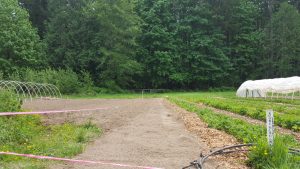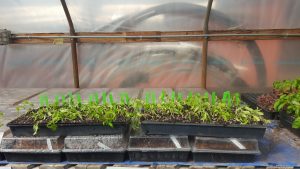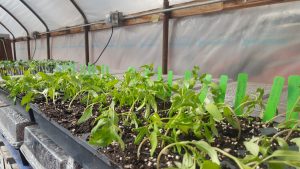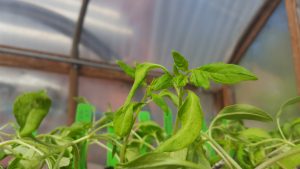The transition to a variable climatic condition for the tomatoes has not been a failure, which in this case constitutes a success! In other words, they have all survived the first cold and rainy week outside of the heated green house. My goal is to have them in the ground by the first week of June, giving ample time to assure that the plants have the best chance to withstand this region’s moist and cool climate.
I spent time looking into fertilizers and, having talked to the farm managers, decided that the field’s nitrogen and boron deficiencies will be amended using feather meal -for nitrogen, and Solubor – for boron. Care will be taken when determining the amounts of these organic fertilizers that will be applied to the field. If applied too soon, the desired effect may be washed away through leeching, and if too much of either amendment is applied, the plants could be negatively affected.
I have taken the time to update the image gallery and link it up to an instagram account for the 2019 NOVIC trial. In time, there will be multiple posts every week, making it worth checking throughout the week. For now, however, we are still playing the waiting game.





